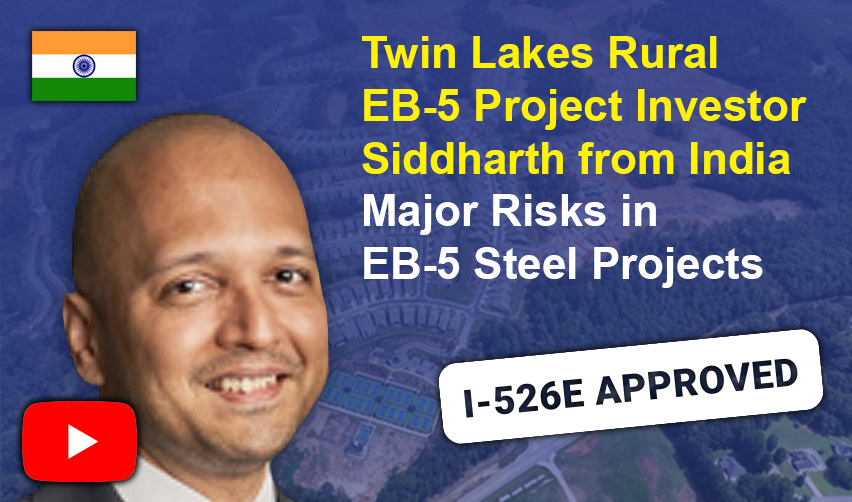Hear Siddharth Agarwal, a Bay Area Resident and EB-5 Investor,
Explain the Major Risks in EB-5 Steel Projects
Siddharth:
Manufacturing is anything that is like a factory. So, without taking any names, there are EB-5 projects in the US right now that are building a steel plant. For example, that’s a manufacturing project.
Now talking about the risk characteristics briefly with manufacturing, I find that, and we’ll get to this later on in the presentation, I think it’s very project-specific in terms of the factory is going to manufacture. Is the factory going to manufacture a product that is a part of a very cyclical industry? For example, steel? With cyclical industries the problem is that you have to time the market.
You should be entering the market at a time when you expect the factory to get ready in the next two, three years. And then you expect that, in steel, cyclicality will take you to the top of the curve. Unfortunately, if you catch this wave at the time when the cyclicality is going downwards or the industry is kind of going through a glut of supply… A glut of supply means that there is too much steel available or too much copper available, and it means that prices are low, which means these factories, which usually have long-term contracts on their production, are not able to find willing customers to offer them good pricing. And in a situation like that where your customers are squeezing you on a product, which usually is a commodity, you will not be making a lot of money, or the factory in itself is not going to make a lot of money and servicing debt. This is usually the way these investments are structured or servicing convertible debt, and it is going to get very difficult.
A few pointers. If your capital, if EB-5 capital is the first dollar to go into building a project, then stay away from that project. There is a scrap iron steel plant that is being built in the U.S. somewhere (I think in the Southwest or some part of the U.S.), just by looking at the documents, I think the terms that were being imposed on EB-5 investors were extremely onerous. But at the same time, without having committed capital from the senior lenders in the project, the first dollar to go in was from EB-5 investors.
I just did not see myself ever recommending anybody in good faith to put that money in that project.
The other thing that you have to also be careful of is credit funds or other institution investors. Now there are projects which (and this includes hotel projects or resorts, and it also includes a steel plant project) where very sophisticated hedge funds or private credit funds are going to be the senior lenders to these projects. Despite the fact that I work as an investment banker—and I have a lot of respect for these institutions and the value that they provide in the market—if I’m looking at the safety of my capital or the risk profile of the project I’m investing in, I will most likely not invest my money in a capital stack where I am sitting below sophisticated hedge funds or private equity funds; for the simple reason that their cost of capital is significantly higher when they raise money.
They’re raising this money not from people like you and me; they’re raising this money from high net worth individuals or institutional investors who are investing in alternative assets. The investments that these credit funds make are classified as alternative investments. Alternative investments, just by the very definition, are a very risky class of investments. Given that they are raising money from a group of capital providers who are demanding a high rate of return, they in turn, have to loan that capital to projects at a higher rate of return.
Sam:
Just to quickly summarize that, because we have seen a number of large steel manufacturing projects in the market that fit that capital stack profile. Said differently to summarize, a project like that is typically not going to be able to get a traditional senior loan from a major bank that would be lower cost. The reason the senior bank like Wells Fargo is not going to make a loan to that project is because it’s higher risk and Wells doesn’t want to take that risk. So, the only type of loan typically available for a business like that is a senior credit fund or a private equity fund. So, that type of a business would make the loan, but it’s going to be at a much higher cost because they acknowledge that that’s a much riskier business to begin with.
Then as an EB-5 investor, do you want to be behind a company like Wells that is really picking out the very low risk projects or behind a senior credit fund or a private equity fund that is seeking higher risk deals?







